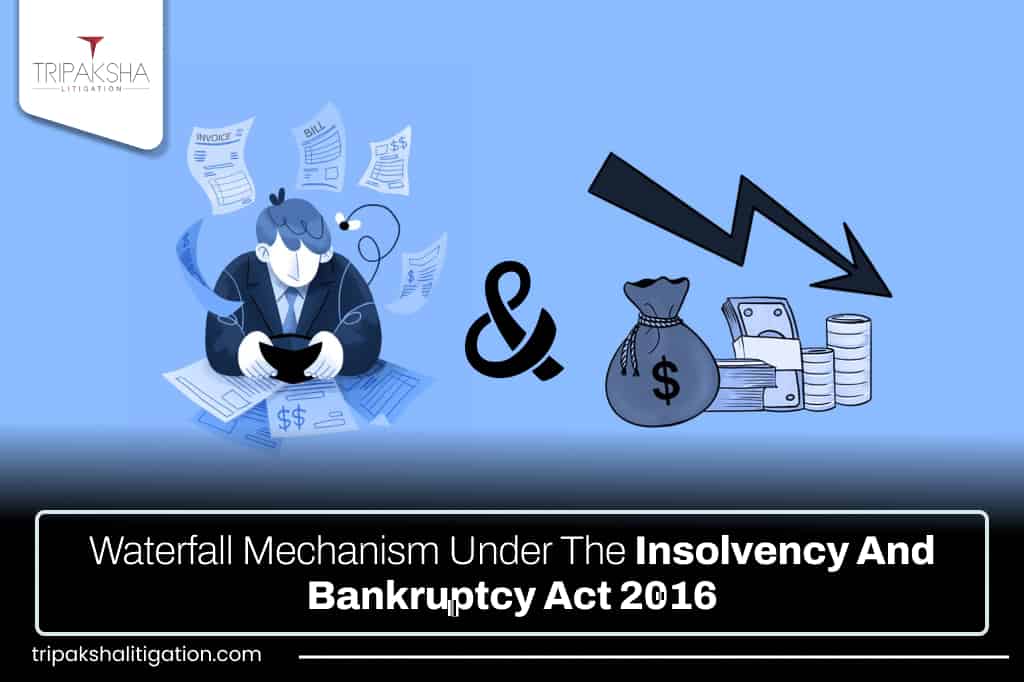The Insolvency and Bankruptcy Code, 2016, was introduced primarily to ensure the timely revival of corporate debtors. The Code allows creditors to initiate insolvency proceedings against corporate debtors to recover their debts through a Resolution Plan or liquidation. The Corporate Insolvency Resolution Process (CIRP) is creditor-driven, with decisions made by the Committee of Creditors (CoC) through resolutions passed in their meetings. The commercial wisdom of the CoC has been repeatedly affirmed in landmark judgments under the insolvency regime.
Section 53 of the IBC outlines the priority for payments under liquidation, known as the waterfall mechanism. This prioritization is crucial for achieving the objectives of the IBC and maintaining stability in the CIRP and liquidation processes. Section 53 starts with a non-obstacle clause and specifies the order for distributing proceeds from the sale of liquidation assets. First, insolvency resolution process costs and liquidation costs must be paid in full. Next, workmen’s dues for the 24 months preceding the liquidation commencement date and debts owed to a secured creditor who has relinquished security are prioritized, with these two ranked pari passu. Following these are employees’ dues for the 12 months preceding the liquidation commencement date, unsecured financial creditors, operational creditors, government and statutory dues, and finally, equity shareholders and partners, if any.
Section 53’s hierarchy of claims is also applicable during payment distribution under a resolution plan, as per Sections 30(2)(b) and 30(4) of the IBC. This emphasizes the critical role of the waterfall mechanism in both liquidation and resolution processes. Judicial pronouncements, such as the Committee of Creditors of Essar Steel India Limited vs. Satish Kumar Gupta & Ors., have clarified that the National Company Law Tribunal (NCLT) cannot reject a resolution plan solely based on perceived unfairness to a particular class of creditors if the interests of all creditor classes have been considered in line with Section 53.
The constitutional validity of the IBC, including the waterfall mechanism, was upheld in Swiss Ribbons Private Limited v. Union of India (2019) 4 SCC 17. The Supreme Court ruled that the distinct treatment of financial and operational creditors does not violate Article 14 of the Constitution of India, as there is a clear rationale for their separate classification.
However, courts have sometimes deviated from Section 53’s provisions, creating conflicts between the statutory framework and judicial interpretations. In State Tax Officer vs. Rainbow Papers Ltd. (2023) 9 SCC 545, the Supreme Court ruled that a government authority holding a statutory charge qualifies as a ‘secured creditor’ under the IBC. This decision diverged from established precedents, which stated that government entities cannot claim priority over secured creditors.
The Supreme Court in Paschim Anchal Vidyut Vitran Nigam Limited vs. Raman Ispat Private Limited and Others (CA. 7976/2019) noted that the Rainbow Papers case overlooked the waterfall mechanism in Section 53 and emphasized that government dues should often be treated with lower priority. The Ministry of Corporate Affairs, in a discussion paper released on January 18, 2023, proposed amendments to treat government debts without security interest as unsecured creditors unless the security interest arose from a transaction with the corporate debtor.
In conclusion, deviations from the waterfall mechanism can create conflicts between legislative intent and the law’s effectiveness, leading to prolonged litigation and consuming valuable court and tribunal time. Safeguarding stakeholders’ interests should not compromise the insolvency resolution process’s effectiveness. Judicial and legislative interventions must be cautious not to disrupt the IBC’s delicate balance, as weakening Section 53’s provisions could destabilize the IBC’s fundamental principles.

